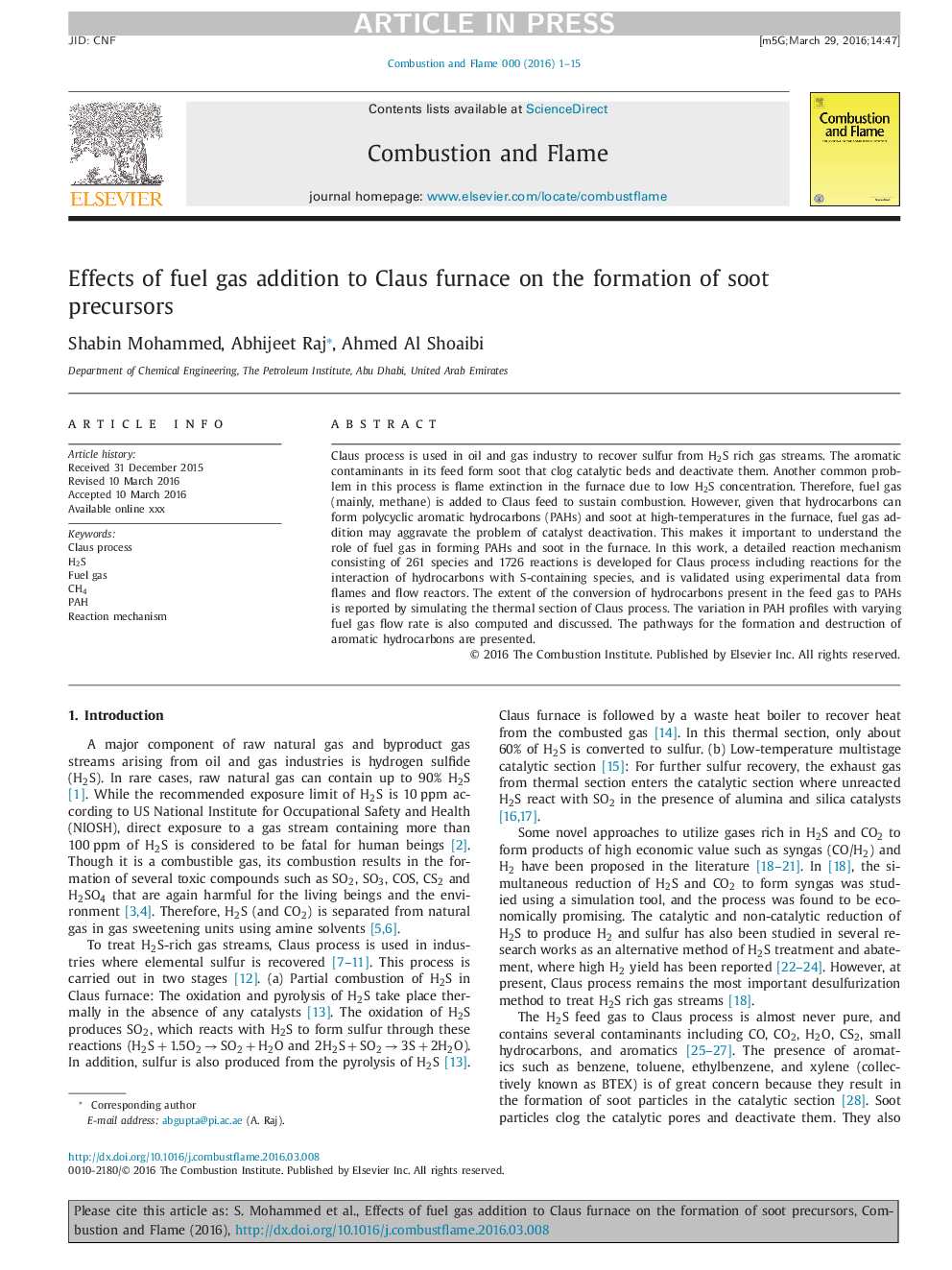| Article ID | Journal | Published Year | Pages | File Type |
|---|---|---|---|---|
| 6594050 | Combustion and Flame | 2016 | 15 Pages |
Abstract
Claus process is used in oil and gas industry to recover sulfur from H2S rich gas streams. The aromatic contaminants in its feed form soot that clog catalytic beds and deactivate them. Another common problem in this process is flame extinction in the furnace due to low H2S concentration. Therefore, fuel gas (mainly, methane) is added to Claus feed to sustain combustion. However, given that hydrocarbons can form polycyclic aromatic hydrocarbons (PAHs) and soot at high-temperatures in the furnace, fuel gas addition may aggravate the problem of catalyst deactivation. This makes it important to understand the role of fuel gas in forming PAHs and soot in the furnace. In this work, a detailed reaction mechanism consisting of 261 species and 1726 reactions is developed for Claus process including reactions for the interaction of hydrocarbons with S-containing species, and is validated using experimental data from flames and flow reactors. The extent of the conversion of hydrocarbons present in the feed gas to PAHs is reported by simulating the thermal section of Claus process. The variation in PAH profiles with varying fuel gas flow rate is also computed and discussed. The pathways for the formation and destruction of aromatic hydrocarbons are presented.
Related Topics
Physical Sciences and Engineering
Chemical Engineering
Chemical Engineering (General)
Authors
Shabin Mohammed, Abhijeet Raj, Ahmed Al Shoaibi,
